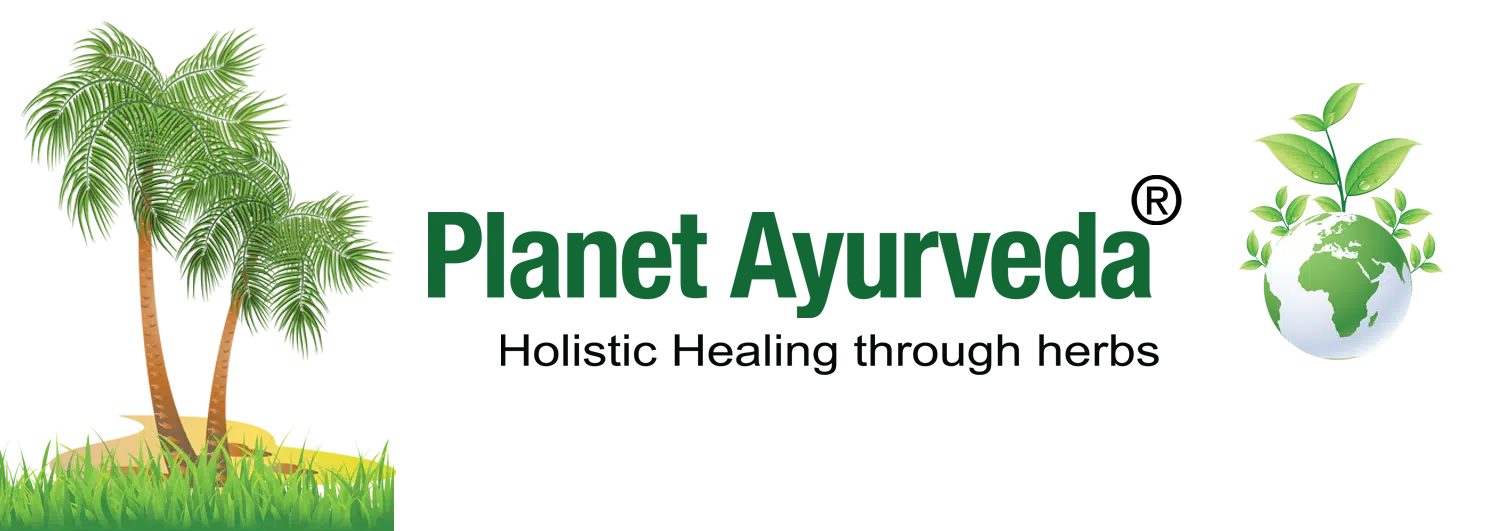Yogendra Rasa – Medicinal Properties, Ingredients, Indications, Dosage & More
Reference : Bhaishajya Ratnavali, Vatavyadhi Chikitsa Prakaran, Chapter 26, Verse 156-162
Abstract
Today’s lifestyle has led to an alarming rise in neuromuscular disorders, metabolic dysfunction, and stress-related conditions. People suffering from issues like paralysis, diabetic neuropathy, tremors, or chronic mental fatigue often have an underlying Vata (bio-energy responsible for movement and nerve functions) imbalance. Ayurveda, the time-honored science of life, addresses such conditions with holistic and natural formulations. Yogendra Rasa, mentioned in Bhaishajya Ratnavali under Vaatrogadhikar (section dealing with Vata disorders), stands out as a classical herbo-mineral preparation with deep restorative potential. This formulation acts as a powerful Rasayana (rejuvenative tonic) that supports the nervous system, strengthens vitality, and enhances cognitive clarity. The presence of Swarna Bhasma (calcined Gold) and Parad (purified Mercury) gives this rasa a unique ability to rejuvenate the body while calming the mind. Physicians often rely on Yogendra Rasa for chronic and complicated Vata-dominant illnesses, especially when there is associated weakness, tremor, or diabetes. Let us now explore the formulation in detail to understand its classical relevance and modern therapeutic scope.
Introduction
Yogendra Rasa is one of the most revered formulations in Rasa Shastra—the specialized Ayurvedic discipline that deals with mercury-based preparations and purified metallic or mineral compounds. The name “Yogendra” is derived from two Sanskrit roots: Yoga (meaning union, potency, or profound efficacy) and Indra (denoting supremacy or king), symbolizing its superior strength and wide-ranging therapeutic power. It is mentioned in the classical texts that this formulation acts as a Yogavahi—a catalyst that carries the therapeutic effect deep into the Dhatus (tissues)—and has the power to eliminate all Roga Samuha (clusters of diseases).
This classical Rasaushadhi is not limited to targeting a single disease but is known for its multi-systemic benefits. Physicians across generations have used it to manage a broad spectrum of disorders, particularly those involving the nervous system, cardiovascular functions, and metabolic disturbances such as diabetes and neuropathy. Yogendra Rasa works at a deeper systemic level, promoting vitality, rejuvenation (Rasayana effect), and functional harmony across various Srotas (body channels).
This formulation is renowned for destroying the indicated diseases just as the rising sun dispels darkness—completely, decisively, and with radiant clarity.
Classical Indication
Vatavyadhi (Neurological Disorders)
Ingredients
- Rasasindoor (Red Sulphide of Mercury) – 2 parts
- Swarna Bhasma (Gold Calx) – 1 part
- Kantha Loha Bhasma (Magnetite Iron Calx) – 1 part
- Abhraka Bhasma (Mica Calx) – 1 part
- Mukta Bhasma (Pearl Calx) – 1 part
- Vanga Bhasma (Tin Calx) – 1 part
Bhavana Dravya (Trituration Medium)
- Kumari Swarasa (Aloe Vera Juice) – Quantity sufficient
Description Of The Ingredients
1. Rasasindoor (Red Sulphide Of Mercury)
Rasasindoor (Red Sulphide of Mercury) is prepared from Parada (Purified Mercury) and Gandhaka (Purified Sulfur). Rasasindoor (Red Sulphide of Mercury) is Ushna Virya (hot in potency) and Laghu (light) in nature. It acts as a Yogavahi (catalyst) and Rasayana (rejuvenative), enhancing the therapeutic action of co-administered drugs. It pacifies Vata and Kapha Dosha, improves Medha (cognitive functions), and is essential in Yogendra Ras for managing Vata Vyadhi (neurological and neuromuscular disorders) by supporting nerve conduction and vitality.
2. Swarna Bhasma (Gold Calx)
Swarna Bhasma (Gold Calx) is known for its Rasayana and Medhya (nootropic) properties. Swarna Bhasma is Sheeta Virya (cool in potency), Tridosha Shamak, and rejuvenates Majja Dhatu (nervous tissue). It enhances Buddhi (intellect), Smriti (memory), and Prana Vata. In Yogendra Ras, it strengthens the mind-body coordination and helps regulate neural transmission in Vata Vyadhi, particularly in conditions like paralysis and tremors.
3. Kantha Loha Bhasma (Magnetite Iron Calx)
Kantha Loha Bhasma (Magnetite Iron Calx) – A potent form of Loha (iron) with Balya (strength-promoting) and Vatahara (Vata-pacifying) effects, Kantha Loha Bhasma (Magnetite Iron Calx) nourishes Rakta and Mamsa Dhatus (tissues associated with blood and muscles) and enhances neuromuscular integrity. It supports bone marrow function and improves physical stamina. In Yogendra Ras, it plays a key role in treating Vatavyadhi by fortifying nerve-muscle connections and reducing fatigue and neuromotor dysfunction.
4. Abhraka Bhasma (Mica Calx)
Abhraka Bhasma (Mica Calx) is Rasayana (rejuvenator), Tridosha Shamak, and Vajikarana (aphrodisiac). It promotes tissue regeneration, enhances Dhatu Agni (tissue-level metabolism), and stabilizes Majja Dhatu (tissues associated with bone marrow). In Yogendra Ras, it is highly beneficial in Vata Vyadhi due to its capacity to regenerate neural tissue, support longevity, and reduce degeneration seen in chronic neurological conditions.
5. Mukta Bhasma (Pearl Calx)
Mukta Bhasma (Pearl Calx) with Sheetala Guna (cooling nature), Mukta Bhasma pacifies Vata and Pitta Doshas and acts as a Manasika Balya (mental strength enhancer). It calms the nervous system, improves cardiac function, and supports cerebral stability. In Yogendra Ras, it plays a neuroprotective role, reducing anxiety, muscle tremors, and sensory disturbances in Vatavyadhi.
6. Vanga Bhasma (Tin Calx)
Vanga Bhasma (Tin Calx) is Snigdha (unctuous), Vata-Kapha Shamak (Vata and kapha balancer), and is used in managing disorders of the urinary, reproductive, and nervous systems. It improves neuromuscular coordination, strengthens lower limbs, and combats fatigue. In Yogendra Ras, it is effective in Vata Vyadhi associated with weakness, trembling, and neurodegenerative states.
7. Kumari Swarasa (Aloe Vera Juice)
Kumari Swarasa (Aloe Vera Juice) acting as the Bhavana Dravya (triturating medium), Kumari Swarasa (Aloe Vera Juice) is Tikta (bitter), Snigdha (unctuous), and Vata-Pitta Shamak. It enhances digestion, detoxification, and absorption of Bhasmas. In Yogendra Ras, it aids deep tissue penetration of ingredients and supports systemic action in chronic Vata Vyadhi by improving Agni (digestive fire) and Dhatu (body tissues) nourishment.
Method Of Preparation
The preparation of Yogendra Ras follows stringent classical Ayurvedic pharmaceutical principles of Rasa Shastra:
- Preparation of Rasasindoora (Red Sulphide of Mercury): Purified Parada and Gandhaka are first processed together to form Rasasindoora (Red Sulphide of Mercury).
- Mixing and Trituration: All other purified ingredients are added to Rasasindoora in a clean mortar (Khalwa Yantra). They are finely powdered and thoroughly mixed.
- Bhavana with Kumari Swarasa: An adequate quantity of Kumari Swarasa (Aloe Vera Juice) is added, and the mixture is vigorously triturated until a fine, homogeneous paste is formed.
- Special Processing (Dhanya Rashi): The paste is placed on Erandapatra (Ricinus communis leaves), covered to form a pottali (bolus), and traditionally kept in a heap of paddy (Dhanya Rashi) for three days.
- Final Trituration and Tablet Formation: On the fourth day, the paste is removed, and Bhavana with Kumari Swarasa is repeated until the desired characteristics of proper trituration (Subhavitha Lakshana) are obtained.
- The fine homogeneous mass is then rolled into tablets of 250 mg, dried in the shade, and stored in a cool, dry place.
Medicinal Properties
Yogendra Ras is a versatile Ayurvedic formulation with a wide range of medicinal properties and applications, particularly effective in complex and chronic conditions.
Neurological Disorders
It is used for Pakshaghata (hemiplegia), paralysis, epilepsy, and diabetic neuropathy. It strengthens and rejuvenates the nervous system, improving nerve conductivity and regenerating nerve tissues. Beneficial for locked jaw, dizziness, neuritis, sciatica, backache, vertigo, and delirium.
Metabolic Disorders (Diabetes)
This is excellent for diabetes and complications like diabetic neuropathy and excessive urination (polyuria). It helps control blood sugar and improves glucose metabolism.
Cardiovascular Conditions
It is beneficial for cardiac hypertrophy, atherosclerosis, and hypertension. It strengthens the heart and heart muscles, helps clear blockages, and addresses palpitations, dyspnea, impaired circulation, bradycardia, and cardiac edema.
Digestive And Abdominal Issues
It provides relief from abdominal colic, gastritis, fistula, and piles, improving digestion and metabolism.
General Debility And Rejuvenation
A powerful Rasayana (rejuvenative) and tonic, enhancing overall vitality, strength, and immunity. It is helpful for chronic fatigue, general debility, and acts as a natural aphrodisiac.
Mental And Psychotic Conditions
It is indicated for various mental problems and psychotic conditions, improving mental clarity and focus.
Eye Diseases
Some traditional uses include benefits for eye conditions.
Yogavahi Property
It acts as a catalyst, enhancing the efficacy of other medicines when administered concurrently in chronic conditions.
Impact On Dosha
Balances Vata and Pitta doshas. Its combination of Sheeta Virya (cooling potency) with Lekhana (scraping) properties allows for cleansing without aggravating heat or dryness, crucial for delicate tissues.
Indications
- Neurological Disorders (Pakshaghata, Paralysis, Epilepsy, Diabetic Neuropathy, Locked Jaw, Sciatica, Vertigo)
- Metabolic Disorders (Diabetes, Excessive Urination/Polyuria)
- Cardiovascular Conditions (Cardiac Hypertrophy, Atherosclerosis, Hypertension, Palpitations, Dyspnea)
- General Debility and Chronic Fatigue
- Mental and Psychotic Conditions
- Eye Diseases
- Abdominal Colic, Gastritis, Fistula, Piles
- Aphrodisiac
Dosage
Adults – 125 mg to 250 mg (1-2 tablets), once or twice daily.
To be taken with – Honey, milk, water with a little sugar, Triphala kashaya (decoction of three myrobalans), ghee, or Arjun bark decoction (for cardiac issues), Vanshlochan (Bamboo Silica) powder.
Use under medical supervision.
Contraindications
- Avoid during pregnancy and lactation.
- Not recommended for children.
- Strictly avoid self-medication.
- Overdosage can lead to side effects like tremors and dizziness.
- Not recommended for patients post-open heart surgery or aged 70 and above.
- Always use under the strict supervision of a qualified Ayurvedic physician.
- Consult a physician regarding interactions with modern medicines (take allopathic first, then Ayurvedic after a 15-30 min gap).
Conclusion
Yogendra Ras stands as a profound testament to the pharmaceutical knowledge within Rasa Shastra, offering a sophisticated approach to managing complex and chronic health challenges. Its classical origins in Bhaishajya Ratnavali highlight its foundational role in addressing Vata-related disorders, encompassing a wide array of neurological, cardiovascular, and metabolic dysfunctions.



